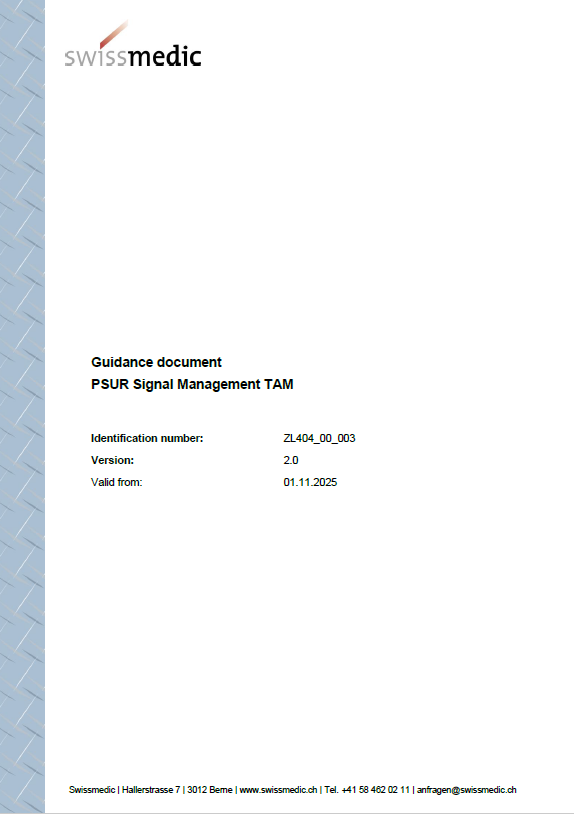Swissmedic Reinforces Signal Management and PSUR Requirements for Veterinary Medicinal Products
Swissmedic has released Version 2.0 of the Guidance Document on PSUR Signal Management TAM, effective 1 November 2025.
This update strengthens the requirements for Periodic Safety Update Reports (PSURs) and clarifies how these interact with the Signal Management Process (SMP) — a critical step in ensuring product safety and regulatory consistency.
A Stronger Framework for Pharmacovigilance
The new version aligns Swiss pharmacovigilance practices more closely with EU Regulation 2019/6 and VICH GL 29.
Swissmedic explicitly states that annual EU SMP reports cannot replace PSURs, as both have distinct objectives.
This ensures that safety reporting remains systematic, traceable, and evidence-based, supporting faster regulatory evaluation and improved transparency in post-market data.
Key Regulatory Changes
Manufacturers and Marketing Authorisation Holders (MAHs) will need to adapt their internal vigilance procedures to comply with new expectations. The main changes include:
Stricter requirements for PSUR content, structure, and periodicity;
Emphasis on continuous pharmacovigilance beyond the initial four-year obligation;
Integration with international safety signal management processes;
Clear guidance on data collection, analysis, and submission deadlines.
These changes reinforce Swissmedic’s commitment to harmonised and proactive market oversight.
Impact for Manufacturers and IVD Companies
For medical device and IVD manufacturers, the implications go beyond veterinary products.
Swissmedic’s approach reflects a broader regulatory trend toward continuous safety evaluation, data-driven vigilance, and cross-border compliance alignment.
Companies must ensure their post-market surveillance systems are capable of identifying, assessing, and reporting signals efficiently — transforming vigilance into a strategic advantage.
Conclusion
Swissmedic’s new guidance represents a decisive step toward more transparent and harmonised pharmacovigilance.
For manufacturers, this is both a challenge and an opportunity to elevate quality systems, adopt best practices, and maintain trust in product safety and performance.
Read the full document below.
